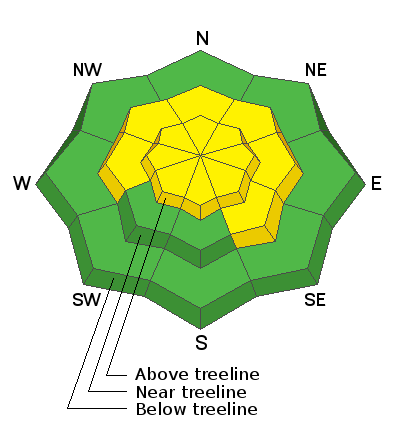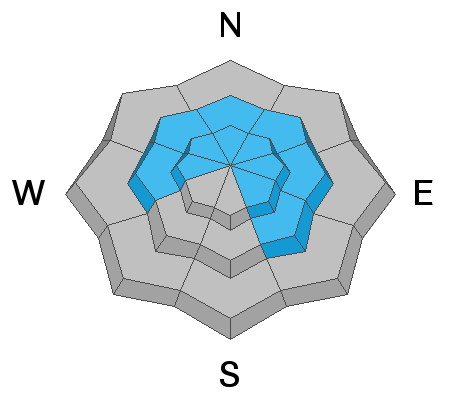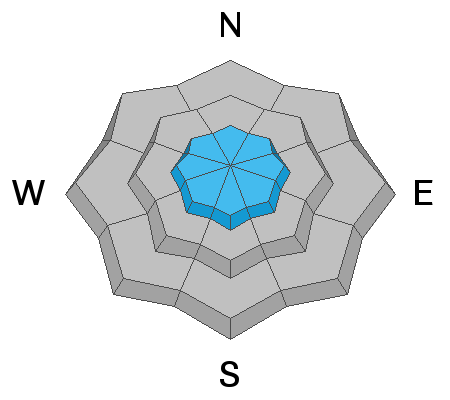The Geyser Pass Road was plowed and widened on Wednesday. There may be an inch or two of new snow on a snow-packed surface this morning. Beware of soft shoulders.
The Lower Utah Nordic Alliance (LUNA) last groomed and set classic track into Gold Basin on Monday. Expect a couple of inches of new snow today.
24 Hour Snow 3" 72 Hour Snow 3" Base Depth in Gold Basin 50" Wind S 15-25 mph Temp 20F
It's a balmy and blustery morning up there with 2"-3" of new snow. Southerly winds overnight blew in the 20-25 mph range with gusts into the 40's. Look for mostly cloudy skies today and continued breezy SW winds shifting to NW later today. High temps will be near 30F. High pressure moves in tomorrow and temps will soar into the mid 40's under sunny skies. A weak shortwave will clip by to the north on Sat night with warm and sunny skies again on Sunday. After that, all eyes are on a series of troughs and a coming unsettled weather pattern for next week. Models have yet to come up with a consistent solution.
Snowpack Discussion
A few inches of new snow combined with wind may result in some shallow, fresh deposits of wind drifted snow at upper elevations. As always, be on the lookout for fresh drifts on the leeward sides of ridge crests and terrain features in exposed terrain. In sheltered areas, the new snow will make for a nice refresh. Warm temperatures and sun over the past two weeks have crusted over southerly aspects as well as helped strengthen and consolidate the snowpack. Near and below treeline, the snowpack is generally supportive, and you will probably not see any obvious signs of instability such as cracking or collapsing. However, if you dig down or probe the snow, you will still find weak layers near the bottom of the snowpack. The most dangerous slopes face NW-N-SE and contain a slab 1'-3' thick that is perched above weak, faceted snow. These slabs are becoming harder to trigger but once released they could produce deep and dangerous avalanches. Likely trigger points include shallower areas along slope margins, around sparse trees or rock outcroppings, or on repeat running slide paths.










